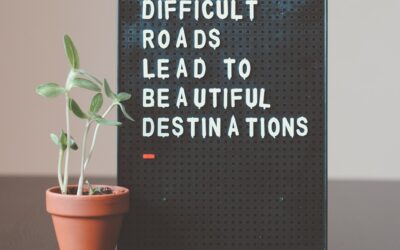- How to Find What You Want in Life: The Hate List Method (3 Steps)
- Core Values Discovery: Why You Don’t Know Who You Are Until You Watch Yourself
- Vision & Life Mapping: Why You Need a Clear Map And Not Just More Goals
- Purpose Beyond Goals: Why You Can’t Think Your Way Into It
- Self-Leadership Is Not Motivation. It is Responsibility.
Table of Contents
"Would you tell me, please, which way I ought to go from here?" "That depends a good deal on where you want to get to," said the Cat. "I don't much care where…" said Alice. "Then it doesn't matter which way you go," said the Cat. — Lewis Carroll, Alice in Wonderland
How to Find What You Want in Life Starts Here
It’s the question that quietly haunts many of us: how to find what you want in life.
But maybe that’s the wrong question to start with. Maybe it’s not about chasing the perfect end goal but about recognising something much closer. Something you already know deep down.
Is there even such a thing as “what you truly want”? Or is it a patchwork of borrowed dreams, soaked up from family, friends, and social feeds?
What if the clearest way forward is hidden in the places you don’t want to go?
The Cost of Drifting
When you don’t know how to find what you want in life, you end up somewhere. That “somewhere” is usually shaped by other people’s expectations.
If you keep drifting, life starts to feel like a blur of obligations, routines, and quiet dissatisfaction. And the scary part? You often don’t even realise it until months or years have slipped by.
The way to stop drifting isn’t to suddenly discover your purpose. It’s to start recognising what is not for you.
Start With What You Don’t Want
Forget the endless search for your “passion.” It’s too abstract. Too heavy.
Start simple. Ask yourself:
What drains me?
What frustrates me?
What feels like a waste of my time and energy?
This is your hate list . Not to dwell in negativity, but to build contrast. Without contrast, you can’t see clearly what lights you up.
How to Build Your Hate List
Step 1: Write Your Hate List
List jobs, environments, habits, relationships, and tasks that deplete your energy.
Be ruthlessly honest. Even small irritations matter.
Keep this list open. It grows with you.
Step 2: Flip the Script
Here’s the key. For nearly everything you dislike, there’s an opposite. That opposite is a powerful clue to what energises you.
For example:
I hate micromanagement → I love autonomy
I hate noisy offices → I love quiet, flexible spaces
I hate unclear roles → I love defined, meaningful work
This method brings immediate clarity and direction.
Why It’s Okay to Change Your Mind
What you love today, you might outgrow tomorrow. Maybe two years ago, working in an office energised you. Now, it drains you.
That doesn’t mean you’re flaky. It means you’ve grown. You’ve evolved. You’ve sharpened your self-awareness.
And that’s the point.
Some people notice these shifts quickly. Others take more time. Both are valid. Both are human.
Step 3: Track Your Shifts
Keep a living document where you update your hate list and love list regularly. Over time, you’ll spot patterns. Those patterns quietly guide your next steps.
The Two Roads at Every Crossroad
When you realise something feels off, you usually have two clear choices.
Option 1: Dig Deeper
Reflect.
Journal.
Ask: “Why do I feel this way? What’s behind this discomfort?”
This is the self-therapist route. It can bring profound insights, but it’s not always fast.
Option 2: Accept, Adjust, or Move
Sometimes, you already know. No overthinking required.
Accept the situation as it is.
Adjust what you can from within.
Or, step away from what no longer fits.
Personally, I lean towards option two. Not everything in life needs to be unpacked. Or can be unpacked. Sometimes, it simply needs to be changed.
Your Reality Is Malleable
Life isn’t black and white. It’s colourful, evolving, shaped by your perception.
Learning how to find what you want in life isn’t about a perfect plan. It’s about noticing what drains you, what energises you, and making conscious choices.
Your dislikes have value. They tell you what doors to close. And often, closing one door reveals the right one to walk through.
You Are the Navigator
Nobody else will live your life. People will offer advice, but they won’t carry your consequences.
You are the navigator.
You hold the compass.
The first step to feeling more alive, more connected to your life, is brutally simple. Know what you don’t want.
This is not a small step. It’s the step that changes how you make decisions from here on.
Your Action Step
Start your hate list today.
Write down at least three things you never want to deal with again.
Flip them to reveal the opposites.
Watch how much clearer your path becomes.
Your Challenge
For the next seven days:
Each night, add one new item to your hate list.
At the end of the week, highlight three positive opposites.
This is your first, honest self-navigation map.
Your clarity starts here.






Very Insightful and to the point! Theodore Roosevelt said “Comparison is the thief of Joy”.
Rationally it only makes sense to compare yourself to… yourself from the day/month/year before. As you said we all have different backgrounds (genes, upbringing, resources and karma to deal with).
Growth mindset = learning mindset. I believe we are all here (on earth) to learn. This mindset allows to celebrate both successes and failures as amazing growth opportunities..
Can’t wait for more articles from you!